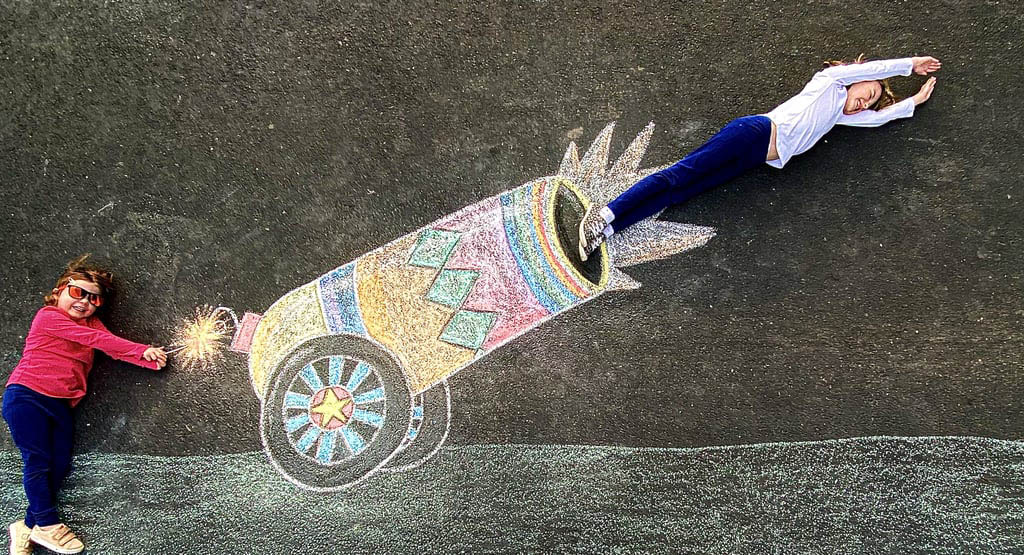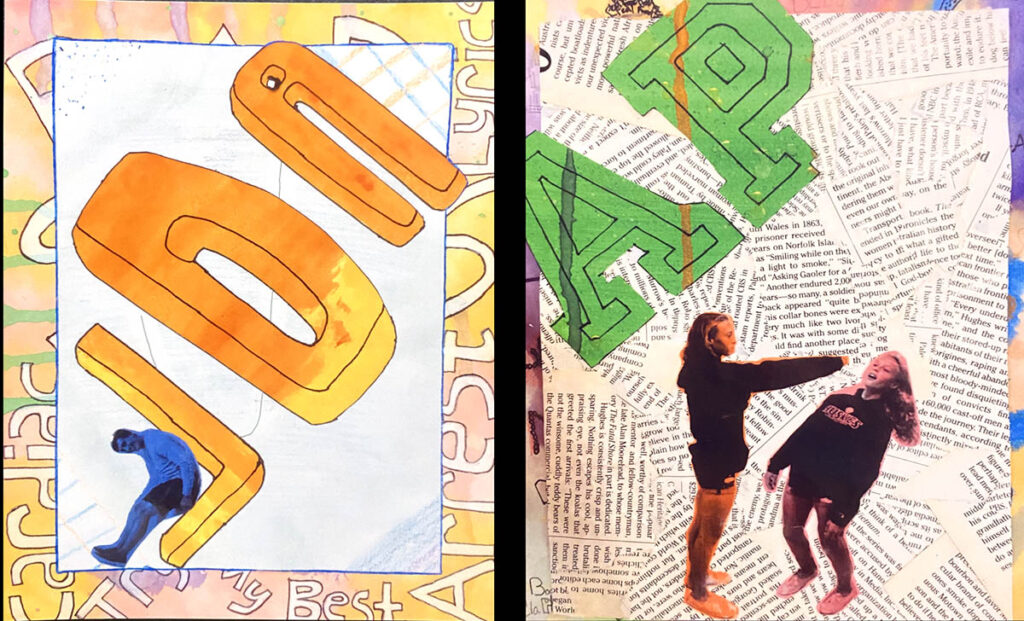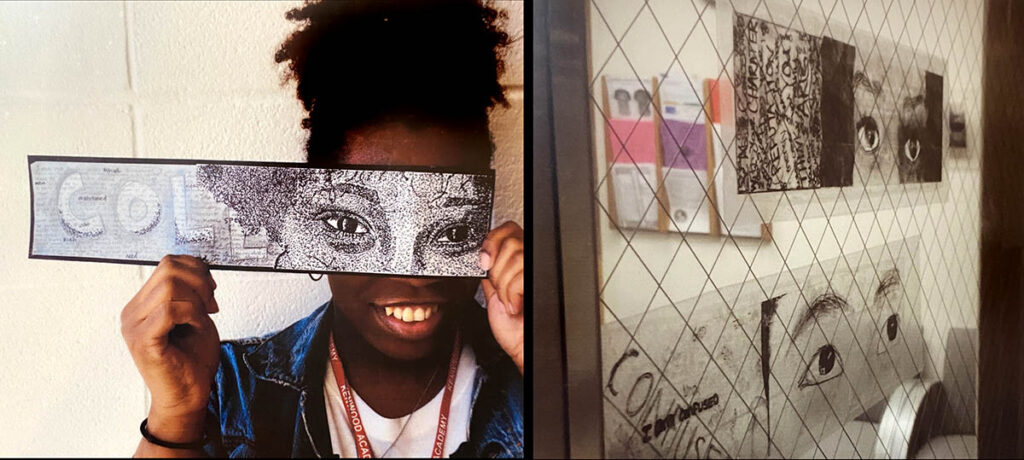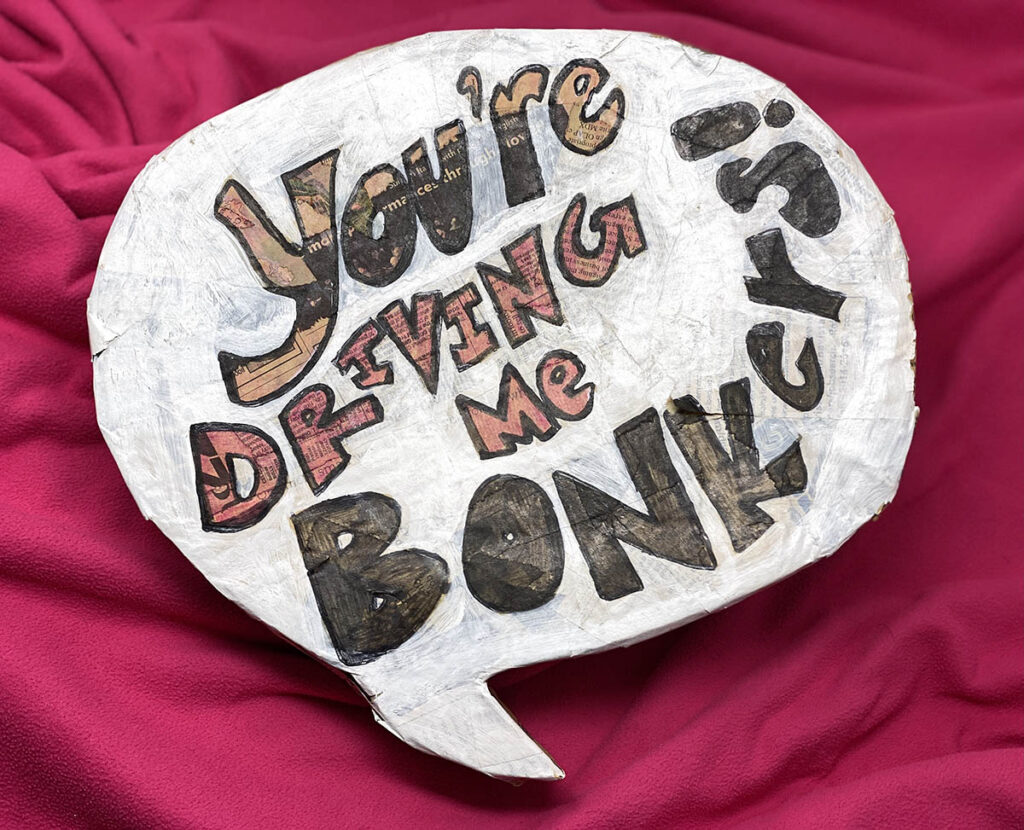Have you ever felt your students’ attention and interest wane when working through long units? Sometimes it feels good to rely on your go-to curriculum, especially during stressful times. While there is comfort in routine, sometimes it can start feeling monotonous. When our classrooms feel a bit stale, and our students start to check out, it’s time to put some oomph into our lessons. This might seem daunting—when will you find the time and energy to brainstorm, plan, and implement amazing new lesson ideas? Don’t worry! It doesn’t take a complete overhaul to break the monotony and inject some fresh air.
Let’s look at why you should integrate mini-lessons and some ways to keep things fresh in your curriculum.
Why should you incorporate short “extra” projects?
Long projects are important in the art room to develop artistic stamina and perseverance. But with any sustained task, we can lose students’ attention. Sometimes students forget the purpose of the lesson or miss out on connections. We can all get into a rut when we are hyper-focused on independent work for weeks on end.
There are a lot of other great reasons to include short bursts of artmaking throughout your long-term projects. Here are a few:
- Connect students to more than one purpose of the lesson.
- Add some fun or silliness while meeting the unit’s objectives.
- Toss an extension to early finishers.
- Give a break to some without pausing the whole class.
- Engage artwork with an audience.
- Wrap up with a one to two-day extension.
- Bring the class back together after working independently.
- Transition into the next unit or lesson.
- Engage students in different ways to display and present artwork.
- Build stamina with a refreshing change of pace.
Check out the following PRO Packs to help you consider the why and how to review your pacing and balance:
- Crafting Your Teaching Philosophy
- Bringing New Life to Old Lessons
- Enhancing Artwork With Digital Integration
Here are 13 ways to spruce up your lessons without revamping your entire scope and sequence!
Dabble in Digital
Adding technology doesn’t mean redesigning how you teach your lesson. Instead, use technology as a tool to expand your existing lesson. If you have one day in the computer lab or even one computer in your classroom, you can expose students to technology in conjunction with traditional media.
1. Mix It Up
Scan or photograph a physical artwork and upload it to editing software. This allows students to explore without the worry of wasting all the time they put into their paintings. Modify the image by transposing line drawings on different layers. Experiment with color distortions using filters and color palettes. Students can slice, cut, copy, and paste to create interesting repetitions and digital weavings. Flip, elongate, and skew to make the paintings and drawings more abstract.
2. Interactive Me
There is nothing more fun than digitally interacting with your own artwork. Scan or photograph the original piece. Students photograph each other sitting on a chair, jumping in the air, or leaning on a wall in pairs or small groups. Upload the images, erase the backgrounds, and place the artists onto their artwork. This is an imaginative way for students to interact with their artwork—they can lean on a still life or climb up their own face!
Amplify With Installation
What’s more fun than making a work of art? How about making many works of art and then creating a large-scale (or even mini) installation! Engage your students in unique ways to display artwork and draw in an audience.
3. Through Their Eyes
Have you seen the Inside Out Project? JR’s large-scale wheat paste portrait installations are inspiring and thought-provoking. Take your value drawing lesson to the next level. Students draw their eyes using shading, make a copy, transfer the laser ink using packing tape, add on contact paper, and install the drawings on school library or office windows. Students and staff will be confronted with what it looks like to see through others’ eyes as they stroll down the hall.
4. My Slice of the Pie
Making individual artwork to take home feels great when shared with family. What about making pieces of a larger installation to share with the whole community? Students can create a slice of art (for example, a giant grid transfer painting), install it as a larger work, and still take home their slice of the pie later. Include a QR code where the audience can take a poll or watch a short video of students talking about the meaning and process behind the work.
5. Scavengers Abound
Speaking of contact paper, use clear, removable film to hide mini-artworks around the school. Create little drawings or photographs and install them in unlikely places. It is so fun to discover a little character on the gym’s basketball hoop, a bathroom mirror, or walking up the stairs. Create a list of clues to share with students and staff to engage in an art scavenger hunt! Use your art department’s swag stickers and tees as prizes.

Picture It With Photography
Making art isn’t all work and no play! Document finished work and take the next step using phone cameras or a class iPad. These fun, interactive ideas can grab students’ attention during an intense period of concentration. Share the photos on social media or school announcement screens to promote your program.
6. Chalk It Up
Get outside and enjoy the fresh air with chalk drawings! While you’re at it, engage visitors by having them lay down on the murals and photographing a-la-Mary Poppins. Display your photos on school social media accounts or websites with a fun hashtag to get everyone involved.
7. Say What?
Have you seen the work of Sandy Skoglund? She creates sculptures and environments where the artwork becomes the photograph of these staged moments. You might not be able to recreate a large-scale installation, but you can take a tip from Skoglund. Create 3D speech bubbles using cardboard, tape, and paint. Hang them from the ceilings using transparent monofilament and photograph students creating a silly scenario.
8. Portrait Intruder
Teaching portraiture? Take a day and play! Have peers swap art heads. Photograph holding the artwork on their bodies doing a silly gesture or dance. Vote on who made the best “head case.”
Move Along With Video
Add in some fun tech components without having it take over the lesson. Students love to play with apps, post to social media, and take silly videos. Toss in engaging video requirements to spark ideas about how art connects to the world beyond the final product.
9. Perform It
Sculpture class is a great place to include performance art. Take a look at how Nick Cave’s performances engage his wearable artworks with performance. After students create a wearable sculpture or costume, send them off to interact in the school community. Students travel together to document the experience and capture audience reactions and interactions to the works.
10. Motion Detector
The classroom projector is for more than just showing slide shows and agendas! Take a still artwork into the third and fourth dimensions by projecting the final image onto a moving or spinning object. Record the event and make a short looped gif.
Break It Up With a Quick App
Sometimes you just need something for the early finishers or a transition into your next unit. Phone or iPad apps can transform any finished product into a fun exercise.
11. Monster Chat
Who doesn’t love a good monster lesson? Students create their own monster, explore texture, and use ink or colored pencils to develop slimy, hairy, and goofy creatures. But that’s not where it ends! Ever wonder what that monster might sound like? Use an app like Chatterpix to record the monster (or really, any artwork!) making silly sounds or catchphrases.
Warning: May induce a serious giggle fest!
12. Stop and Go
Your students made some papier-mâché animals, monsters, or abstract sculptures. Take a day or two for students to create a collaborative stop motion movie! Let students explore their theatrical side by composing a script and designing scenery.
13. Temporary Tattoo
You will want to talk to your administration and parents prior to introducing the idea of tattoos. With an augmented reality app, students can take their artwork to their skin. Learn more about this specific lesson idea in the PRO Pack, Enhancing Artwork With Digital Integration.
Ready, Set, Go!
It is in everyone’s best interest to break up the pace of long lessons with fun and engaging connections. These short activities are great ways to integrate the Connect and Present NCAS standards into your teaching practices. Help your students stay engaged and add some play to their day. After all, art isn’t all serious discussions and month-long projects. You don’t have to reinvent the wheel to help students connect with their art in new and exciting ways. You can expand how students and audiences connect with art by infusing quick, additional mini-lessons within your existing unit.
What mini-lessons do you like to add in connection with larger units?
How do you break up the pace when stuck in the doldrums of monotony?
Magazine articles and podcasts are opinions of professional education contributors and do not necessarily represent the position of the Art of Education University (AOEU) or its academic offerings. Contributors use terms in the way they are most often talked about in the scope of their educational experiences.








